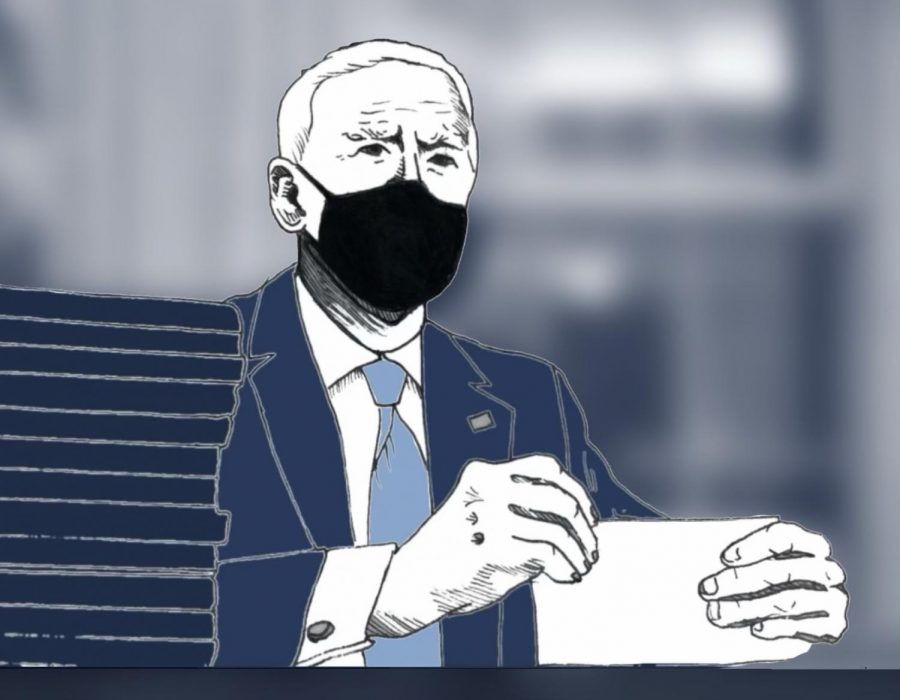President Joe Biden’s stimulus package was signed into law on Thursday, after the Senate amended and the House re-approved the initial bill. The package will provide support to Americans struggling financially due to the pandemic along with ramping up vaccination measures.
On Wednesday, the House voted 220-211 to pass the American Rescue Plan, leaving the final formalizing step – Biden’s signature. The week prior, the Senate voted 50-49, passing the legislation but making changes to what was originally presented to the House on Feb. 26.
Among the bill’s provisions, the most direct form of stimulus to the American public will be $1,400 checks, sent out to those within the bill’s parameters.
All three votes on the stimulus package were entirely along party lines, and no Republican members of Congress voted in favor of the bill. With the changes made in the Senate, the bill now totals $1.856 trillion, just shy of its original $1.9 trillion price tag.
Key changes were made to appease more conservative Democrats, fearing that the loss of just one vote would kill the package in the 50-50 Senate. Democratic Sen. Joe Manchin III of West Virginia, as well as other moderates, had objections to proposed $400 federal unemployment benefits; conversations among Democrats stemming from this uncertainty resulted in the continuation of the already established $300 weekly benefits. The benefits, however, were extended to Sept. 6, past the original Aug. 29 expiration.
Senate Democrats made an effort to re-include the proposal of a $15 minimum wage, but it was struck down again with a vote of 58-42. According to Dr. John Logan, chair of the labor and employment studies department at SF State, raising the minimum wage would have had a large impact on women and minority communities.
“It would disproportionately benefit women and communities of color because those are the people who are disproportionately represented in lower paying jobs at the bottom of the labor market,” Logan said. “To them it would make a huge, huge difference. It would be an enormous anti-poverty measure that we could take.”
According to Logan, the alternative argument is that raising the minimum wage could be a “job killer” and potentially could more rapidly increase automation in the workforce.
“All of the economic analysis that we have suggest that raising the minimum wage to $15 an hour by 2025 would have a very, very small, if any, impact on job growth,” Logan said.
The Senate also included an income tax exemption on student loan forgiveness that will extend through 2025. Currently, if someone is granted student loan forgiveness, they still have to pay income taxes on that forgiven money. Under the changes the Senate made, if any amount of federal student loans are forgiven between 2021 and 2025, they would not be taxed.
According to Dr. Max Lee of SF State’s economics department, this can leave people with student loan debt shocked and facing large unexpected tax hikes. The exemption lasting until 2025 is not a long enough period to make a change in most people’s lives she says.
“It’s not going to have an impact on most people unless the federal government comes in and says we’re going to cancel, say, this much of student debt,” Lee said.
According to Lee, if this exemption is extended beyond 2025, it could make a larger difference, particularly for people who never make enough to fully pay off their student loans over a 25 year period.
Without the exemption, in place Lee said, “At the end of 25 years they get that loan forgiven and all of the sudden you have a bunch of tax you have to pay. You probably wouldn’t have money to pay that back. It could cause a problem for certain groups of people.”
Other changes the Senate made included striking down funding for BART’s Silicon Valley rail extension and Seaway International Bridge that crosses from New York into Canada.
READ: Biden’s American Rescue Plan, the most expensive relief bill in U.S. history, is broken down into various components. The data below, while it reflects some of the largest and most important pieces of spending in the bill, is not entirely comprehensive.








